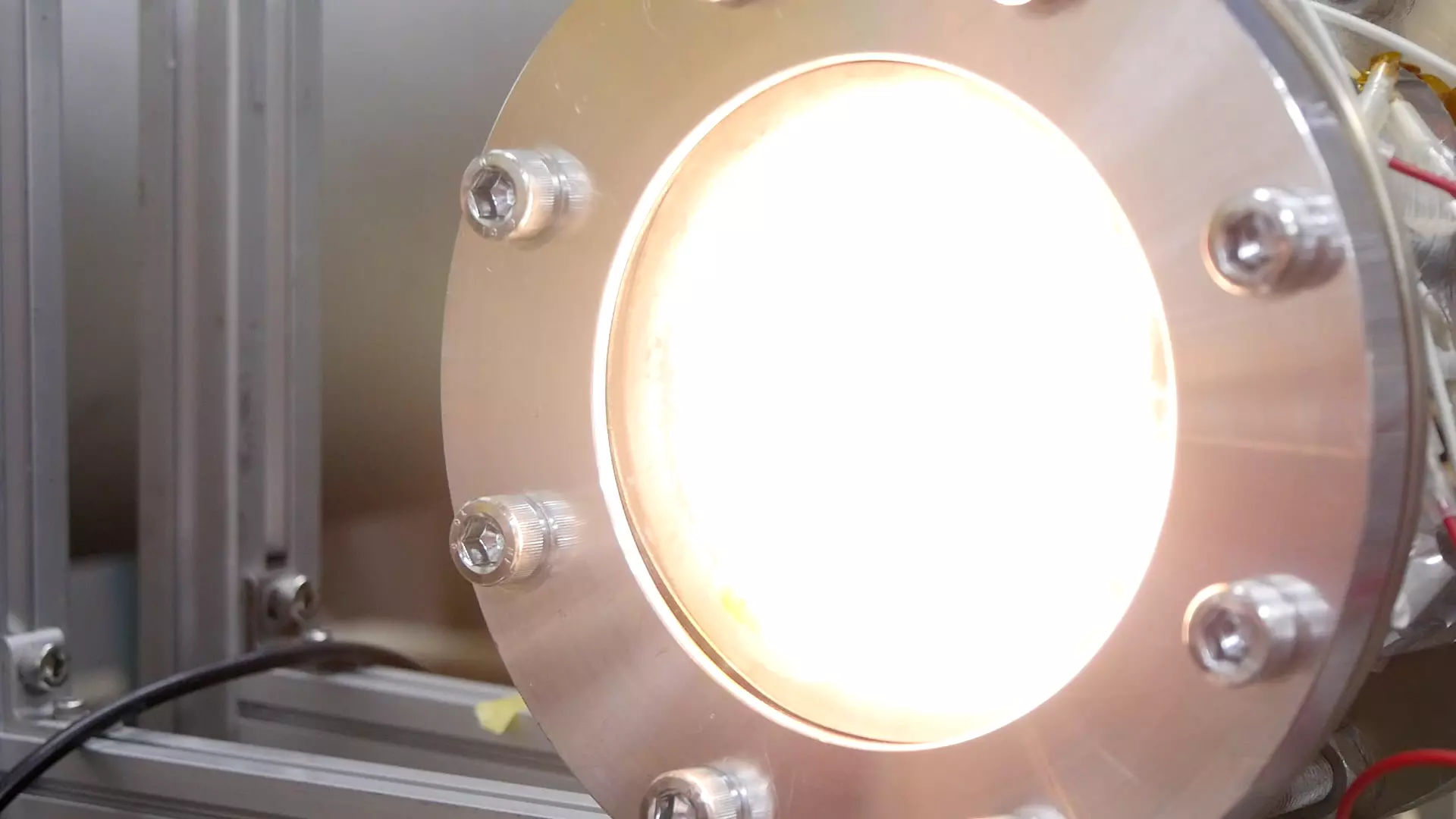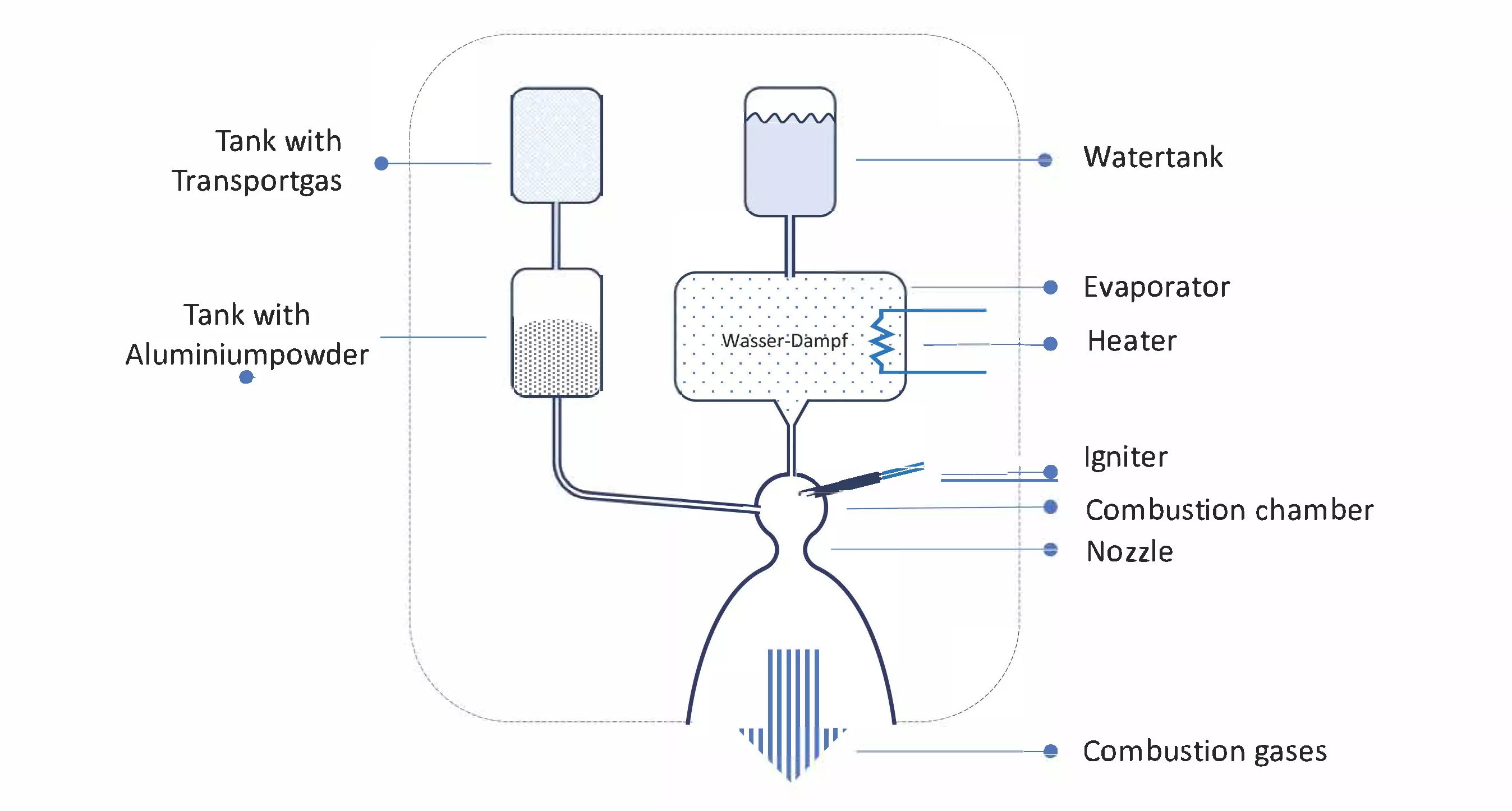This is how IEFE researchers want to move our satellites in space in the future
A new type of chemical micro-propulsion system powered by water and aluminium powder is set to manoeuvre small satellites safely and reliably in space in the future. The propulsion system is being developed by a research team from IEFE, the University of Tokyo and Sirin Orbital Systems.
A team at IEFE is researching a new type of chemical micro-propulsion system for satellites. This uses water and aluminium powder as propellants. The new micro-propulsion system is intended to provide the necessary thrust when transferring satellites into a new orbit, re-entering the earth's atmosphere or inserting asteroid samples.
Such manoeuvres require a propulsion system that enables large increases in speed in a short time span. The known propulsion systems for small satellites - such as electric systems or cold gas propulsion systems - have deficits in the necessary thrust level or their combustion process harbours risks. The new micro-propulsion system being researched at IEFE, on the other hand, is characterised by a high degree of safety and reliability. The high energy density of the water vapour-aluminium propellants is a further advantage.
Aluminium as a fuel is particularly safe because the surfaces of the aluminium powder particles are coated with an oxide film. This makes the metal less reactive at room temperature. Only when the aluminium powder is heated is the oxide film broken up and the metal can be made to react with an oxidising agent. Water is used for this purpose in the IEFE chemical microdrive. This is first heated in an evaporator. The steam is then fed into the combustion chamber, into which aluminium powder is blown at the same time. Combustion is then initiated by means of an igniter. The combustion gases then escape at high speed via the nozzle, generating the desired thrust. Due to the lack of gravity, a carrier gas is used to transport the aluminium powder into the combustion chamber.
The micro-propulsion system described above works in theory today. There are still three technical problems for the practical realisation, for which the research team from IEFE, the University of Tokyo and Sirin Orbital Systems AG are currently developing solutions. Firstly, the high pressure in the combustion chamber leads to the risk of unintentional ignition of the aluminium-water vapour mixture. This problem is to be solved by limiting the ignition pressure to 100 kPa and using very fine aluminium powder (approx. 10 µm). The second challenge is that the two-phase gas-liquid flow degrades the nozzle performance. However, the team expects to be able to minimise these effects by optimising the combustion chamber geometry. To this end, the overall length of the combustion chamber and the nozzle will be reduced to approximately 10-50 mm. The third point concerns the precise control of injected powder mass. This is achieved using the aforementioned carrier gas in combination with various valves and dedicated control systems.
The IEFE research team is currently working on theoretical and practical proof that the solutions described will overcome the technical hurdles and that the new mcrothruster system will work in practice. To this end, for example, initial functional models of the relevant subsystems are being developed and tested. On the Technological Readiness Level (TRL) scale (1 = basic principle, 9 = flight proven) of the European Space Agency ESA, the project is currently at level 3 (TRL3: proof of concept). The researchers are confident that they will reach stage 4 (TRL4: Functional Verification) by mid-2024. A first complete system prototype of the novel chemical microdrive system can then be developed.
Involved parties:
Masaya Murohara, zhaw/iefe und The University of Tokyo
Dr. Marius Banica, zhaw/iefe
Matteo Madi, Sirin Orbital Systems AG
Hiroyuki Koizumi, The University of Tokyo
Patent registration:
Système de micropropulsion à eau et à poudre métallique pour petits satellites. (CH718280A2)

